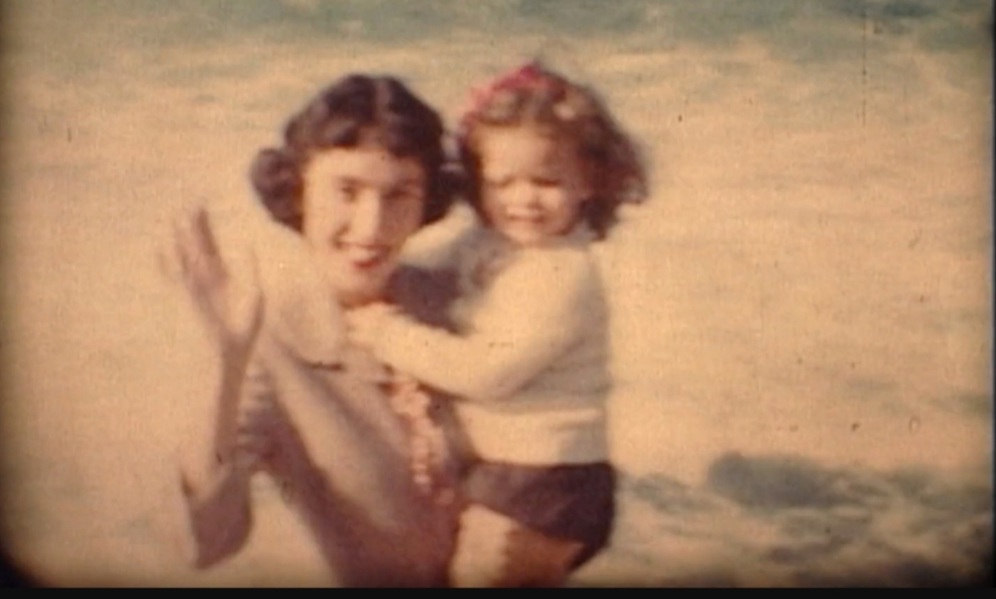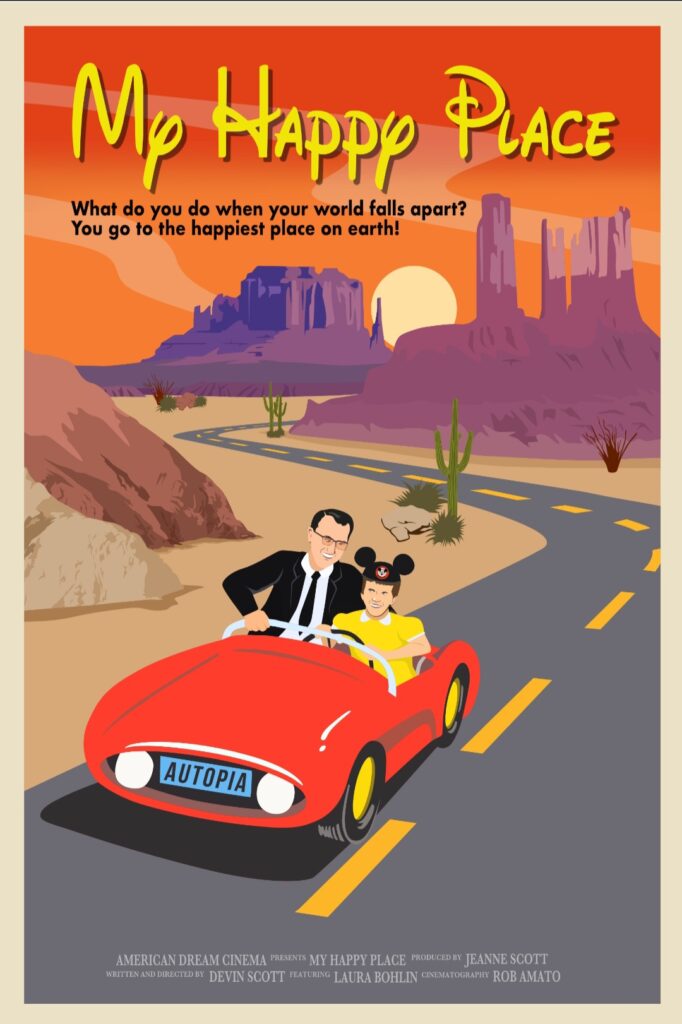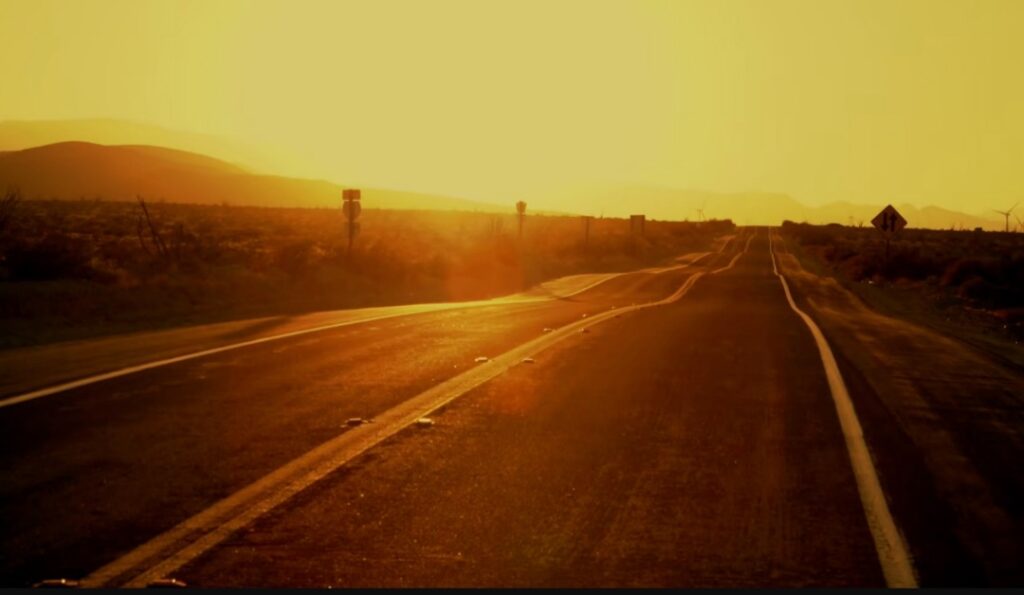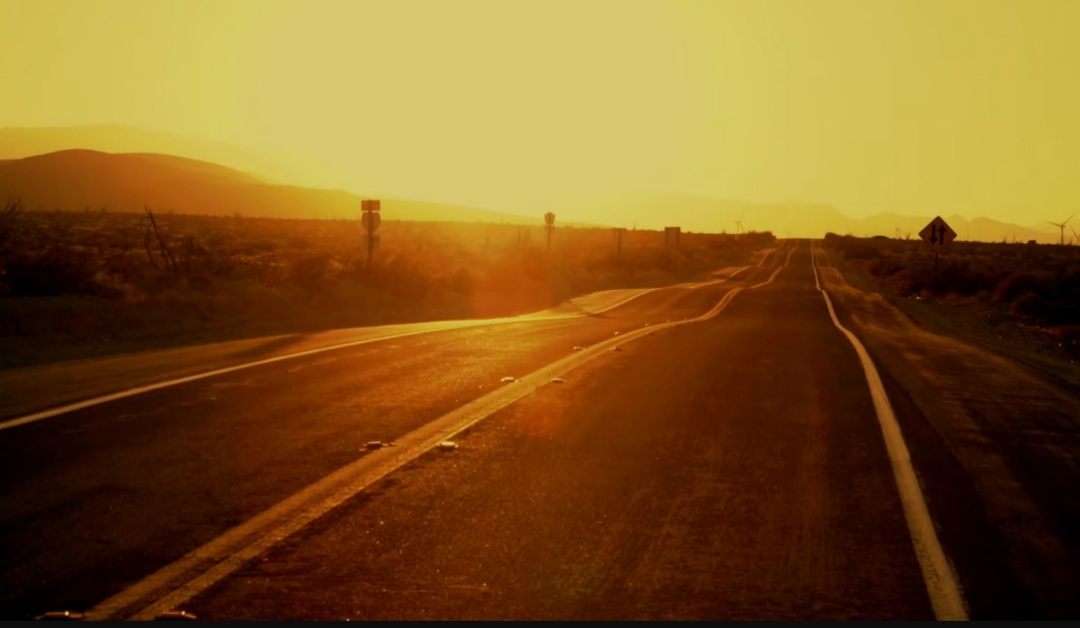With a kodachrome color palette, 4:3 aspect ratio, and the dancing motion of film scratches, My Happy Place is a time capsule preserving the deceptive dreaminess of the 60s. Made almost entirely of found footage, Director Devin Scott’s short film is a memoir-like telling of a childhood filled with hopes that never come into fruition and inevitable realizations that come with growing up.

Anna, voiced by Laura Bohlin, reminisces on a cross country road trip she took with her dad after a grievous divorce. Anna pushes down her pain and anger with a dream of going to Autopia, a promise of freedom found in Disneyland. After a 6 week journey to what is supposed to help her heal, Anna realizes that things are not always what they appear to be.
Told through the deep and soothing voice of Bohlin, the story has a calming and consistent pace. Similar to the nostalgic experience of hearing a bedtime story, Bohlin draws the audience in and lulls them into a reverie. The muted warm shades of brown and yellow paired with dull blues and purples with sporadic pops of red further the dreamlike aesthetic that the film maintains. The softness in the images really make it feel like the audience is watching a memory. With winding roads, midwestern fields, and glowing sunsets, Scott captures the familiar experience of looking back at a memory with rose colored glasses, remembering any sadness or suffering with a falsely optimistic filter.

While the film is extremely captivating visually, there is a lack of emotional impact due to a subtle disconnect between the narrator and the audience. It’s hard to pinpoint, but this could be caused by the film’s use of found footage rather than a traditional acting performance. Without a face to put to the voice, the emotion’s effect feel distant and diluted. Whether the audience is able to sympathise with Anna or not, My Happy Place is a beautifully crafted film that charmingly illustrates and challenges the expression, “simpler times”.


